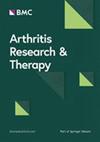“我很痛,我不是装的”:对青少年特发性关节炎及其护理人员对疼痛相关耻辱的反应的定性探索
IF 4.6
2区 医学
Q1 Medicine
引用次数: 0
摘要
幼年特发性关节炎(JIA)是一种慢性炎症,通常以儿童疼痛为特征。JIA疼痛有不同的病程,通常没有任何可见的迹象。因此,患有JIA的青少年可能会因其疼痛而受到他人的负面评价(即与疼痛相关的耻辱感)。理论模型表明,与疼痛相关的耻辱经历有助于青年在当下(即情境)和长期(即持久)的情感、行为和认知反应,最终影响他们的健康。照料者在支持儿童健康方面也发挥着至关重要的作用。虽然照顾者可以保护他们的孩子免受与疼痛相关的耻辱感的潜在负面影响,但照顾者也可能受到孩子的耻辱感经历的影响。因此,本定性研究旨在探讨JIA青少年及其照顾者对疼痛相关污名的情境性和持续性反应。它还审查了他们反应的异同,以确定潜在的保护性反应和可能需要额外支持的领域。10名15-19岁的JIA青少年和12名护理人员参与。青少年和照顾者完成了单独的半结构化访谈。在访谈中,参与者被问及青少年与疼痛相关的耻辱经历,以及这些经历如何影响他们的情境和持久的认知、情感和行为反应。访谈记录使用反身性主题分析进行分析。小组之间产生的主题被三角化,以评估趋同和分歧。随后使用矩阵分析来开发捕获重叠概念的元主题。为每一组制定了单独的主题。矩阵分析产生了五个元主题,这些主题反映了青少年和照顾者对疼痛相关耻辱的重叠情境和持久反应:(1)解决耻辱并提高感知可信度;(2)满足个体需求;(3)因预期污名而产生的恐惧和回避;(4)对心理健康和福祉的长期影响;(5)教育和宣传。与疼痛相关的耻辱感可以以各种方式影响JIA青少年及其照顾者,其中一些反应可以保护他们的健康和福祉。为促进积极的健康结果,有必要制定战略,支持JIA青年及其照顾者应对与疼痛相关的耻辱经历。本文章由计算机程序翻译,如有差异,请以英文原文为准。
“I’m in pain, and I’m not faking it”: A qualitative exploration of the reactions of youth with juvenile idiopathic arthritis and their caregivers to pain-related stigma
Juvenile idiopathic arthritis (JIA) is a chronic inflammatory condition often marked by pain in childhood. JIA pain has a variable course and often lacks any visible signs. As such, youth with JIA can experience negative judgement from others in response to their pain (i.e., pain-related stigma). Theoretical models indicate that pain-related stigma experiences contribute to affective, behavioural, and cognitive reactions from youth in the moment (i.e., situational) and over time (i.e., enduring) that ultimately influence their health. Caregivers also play a crucial role in supporting their children’s health. While caregivers may protect their children from the potential negative impacts of pain-related stigma, caregivers can also be affected by their children’s stigma experiences. Thus, this qualitative study aimed to explore both the situational and enduring reactions of youth with JIA and their caregivers to pain-related stigma. It also examined similarities and differences in their reactions to identify potentially protective reactions and areas where additional support may be needed. Ten youth aged 15–19 years with JIA and 12 caregivers participated. Youth and caregivers completed separate semi-structured interviews. During interviews, participants were asked about the youth’s experiences of pain-related stigma and how these experiences affected their situational and enduring cognitive, affective, and behavioural reactions. Interview transcripts were analyzed using reflexive thematic analysis. Themes generated between groups were triangulated to assess for convergence and divergence. A matrix analysis was subsequently used to develop meta-themes capturing overlapping concepts. Separate themes for each group were developed. The matrix analysis resulted in five meta-themes that capture the overlapping situational and enduring reactions of youth and caregivers to pain-related stigma: (1) addressing stigma and increasing perceived credibility; (2) responding to individual needs; (3) fear and avoidance due to anticipatory stigma; (4) long-term impacts on mental health and well-being; and (5) education and advocacy. Pain-related stigma can impact youth with JIA and their caregivers in various ways, with some reactions being protective of their health and well-being. Strategies to support youth with JIA and their caregivers with navigating pain-related stigma experiences are necessary to promote positive health outcomes.
求助全文
通过发布文献求助,成功后即可免费获取论文全文。
去求助
来源期刊

Arthritis Research & Therapy
RHEUMATOLOGY-
CiteScore
8.60
自引率
2.00%
发文量
261
审稿时长
14 weeks
期刊介绍:
Established in 1999, Arthritis Research and Therapy is an international, open access, peer-reviewed journal, publishing original articles in the area of musculoskeletal research and therapy as well as, reviews, commentaries and reports. A major focus of the journal is on the immunologic processes leading to inflammation, damage and repair as they relate to autoimmune rheumatic and musculoskeletal conditions, and which inform the translation of this knowledge into advances in clinical care. Original basic, translational and clinical research is considered for publication along with results of early and late phase therapeutic trials, especially as they pertain to the underpinning science that informs clinical observations in interventional studies.
 求助内容:
求助内容: 应助结果提醒方式:
应助结果提醒方式:


